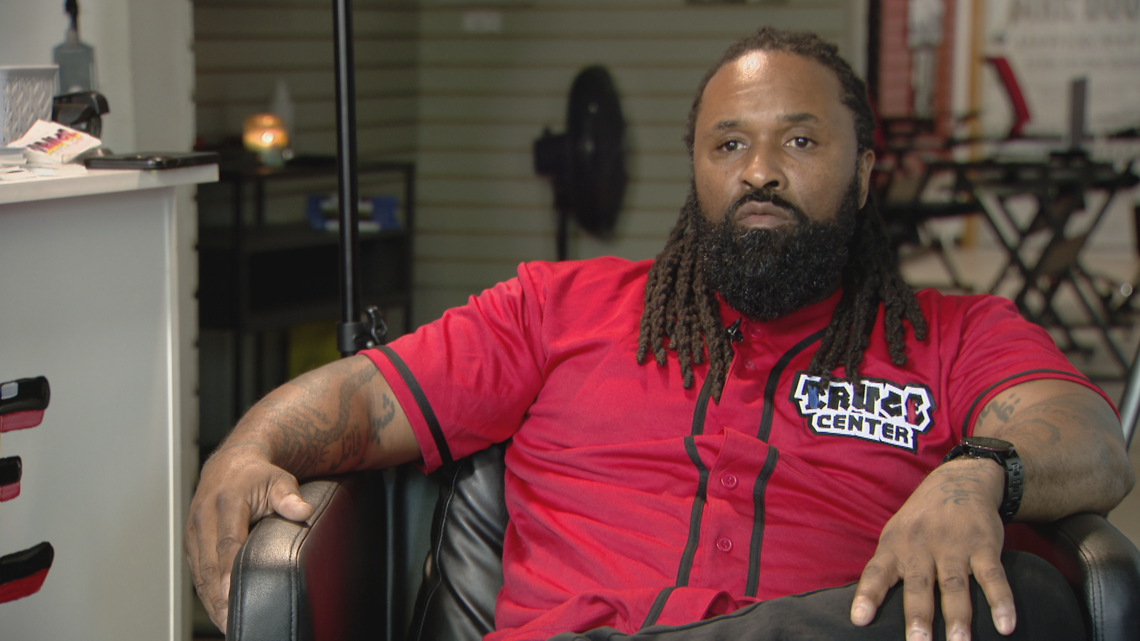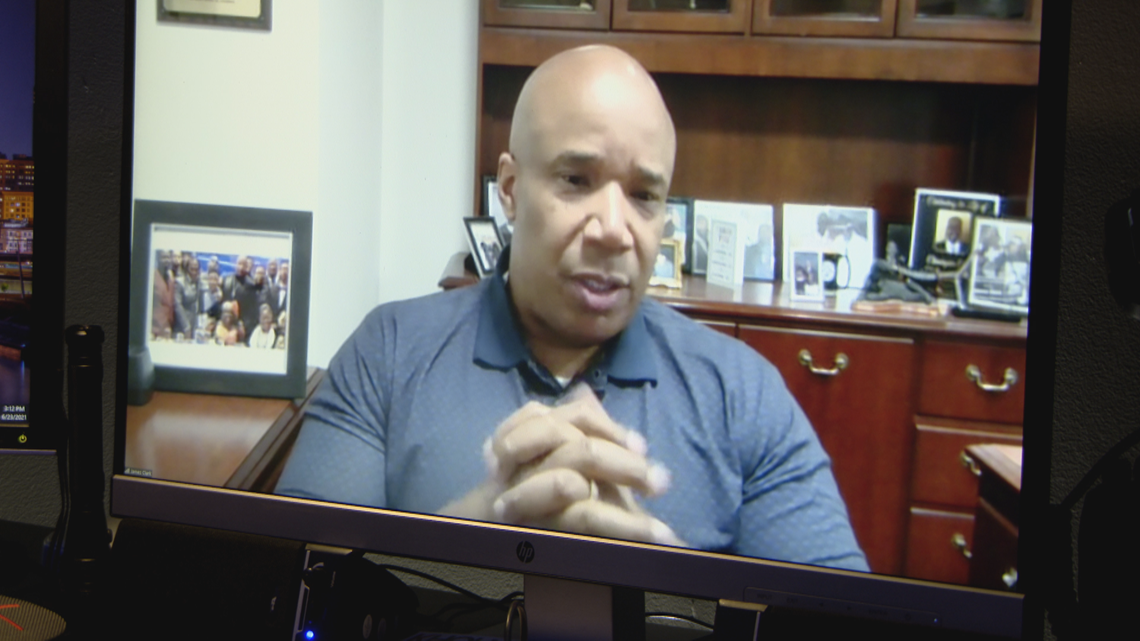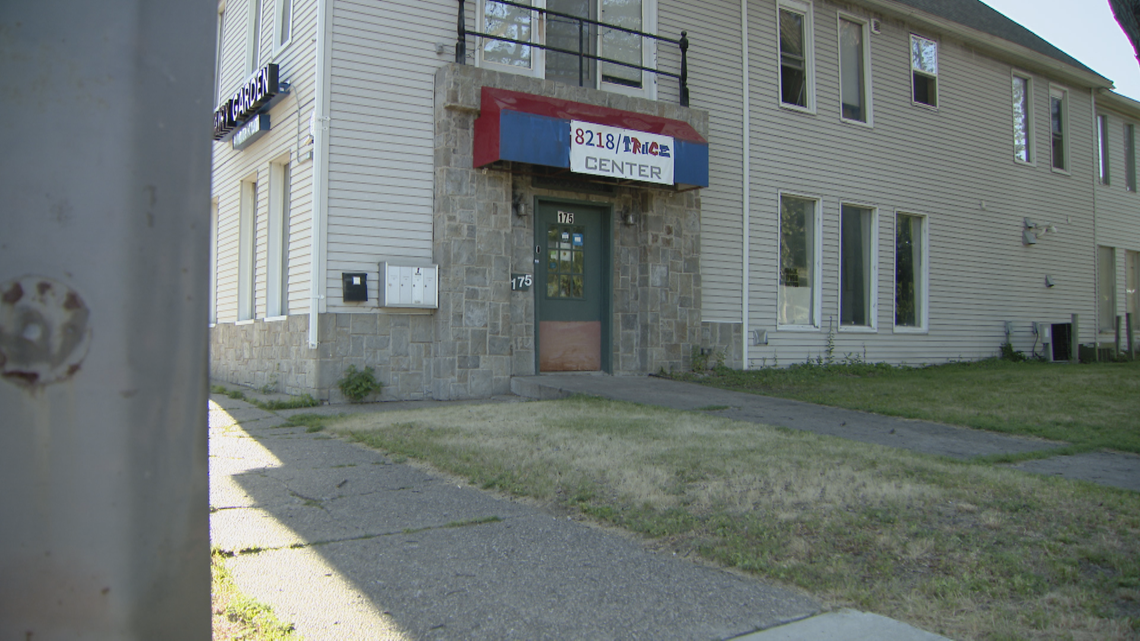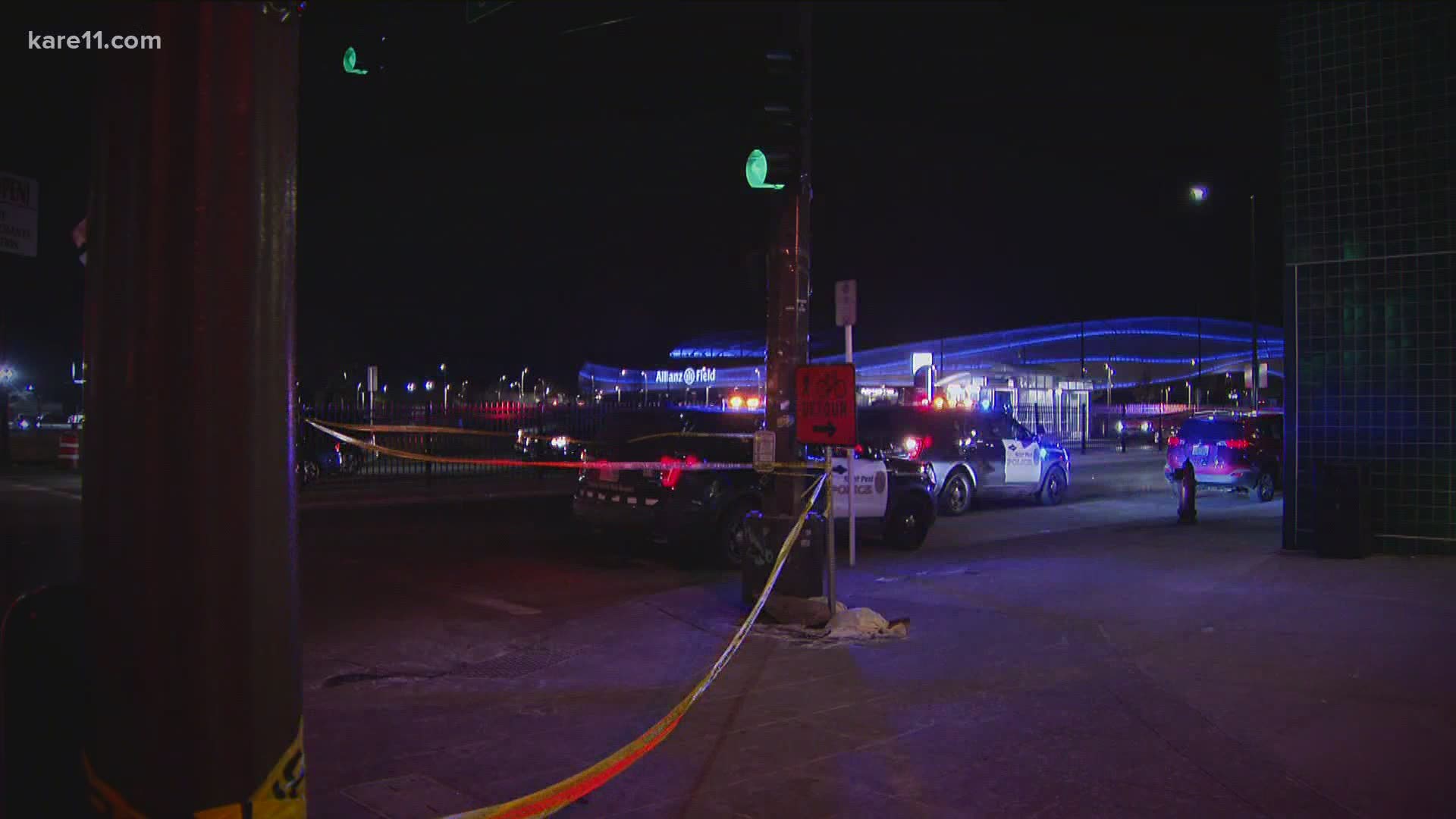ST PAUL, Minn. — At the Truce Center near the intersection of Lexington Parkway North and Selby Avenue, founder Miki Lewis-Frost provides a safe zone to teens in need of an escape from the streets.
Motivated by the murder of his own friend years ago, and informed by the experience of traveling to a number of different cities during his lifetime, Lewis-Frost works tirelessly to reach young people in his hometown before they turn to crime, and also to resolve ongoing disputes before they explode into gunfire.
With two Truce Center locations in St. Paul – and possibly a third coming to Minneapolis at some point – Lewis-Frost knows the Twin Cities as well as anyone in the area.
And he’s concerned by the spike in violence he’s seen the past year and a half, dating back to the start of the pandemic.
“I think a lot of it had to do with people not being able to see each other for so long. A lot of tensions had grown,” Lewis-Frost said. “And then all the sudden the weather breaks, and people are out more. They’re seeing each other more. And there are real bad things.”
In St. Paul, police data shows a 14% increase in shots fired and a 33% increase in people hit by bullets. However, perhaps helped in part by intervention efforts led by people like Lewis-Frost, homicide totals in Minnesota’s capital have slowed in 2021, with a 29% decrease compared to last year.
But with shooting victims in neighboring Minneapolis up by 123% compared to last year – and a homicide rate far surpassing any year in recent memory – Lewis-Frost knows his work is more urgent than ever.
He also knows it must extend far beyond the borders of Minnesota.
“It’s going on everywhere. Everywhere. I have family members and friends all across the country, and it’s similar stories,” he said. “This isn’t just isolated areas. This is everywhere.”


NATIONAL TRENDS
Although the FBI won’t release full data until September, at least one study suggests that the nationwide murder rate in 2020 increased by nearly 30% compared to the previous year. That violence has only continued in 2021, according to police department data in a number of major American cities.
Comparing 2021 with the pre-pandemic year of 2019, homicides have jumped by 53% in New York City, 29% in Los Angeles, and 33 percent in Chicago. After a particularly violent weekend in mid-June, a coalition of 27 different U.S. mayors sent a letter to the Biden administration demanding action – and he responded Wednesday with a new plan that, in part, allows local cities to hire more police officers and invest in anti-violence programs with federal COVID-19 dollars. These mayors voiced concerns from every region of the country – from Atlanta to San Jose to San Antonio to St. Louis, the last of which endured the highest murder rate per capita in a half-century during the turbulent year of 2020.
James Clark, the Vice President of Public Safety at the Urban League of Metropolitan St. Louis, said he was unfortunately not surprised by the levels of violence, tracing it back to an inability to engage with neighborhoods on a meaningful level. The Urban League, he said, has worked even harder lately to partner with churches and build more grassroots relationships in St. Louis.
But the problem has persisted in 2021.
“The violence that was once isolated to north St. Louis and parts of south St. Louis has now morphed into greater dimensions, in North County, South St. Louis, and now downtown St. Louis is being impacted almost on a nightly basis,” Clark said. “We’ve got to stand up now, because if we don’t, it will continue to morph. We need radical investment. We need a radical paradigm shift in social service, and we’ve got to do it now. Our entire country is at a very real crossroads right now.”


Clark attributes much of the violence to the accessibility of guns, which is something the Biden administration is pledging to tackle through strike forces in large U.S. cities. In Clark’s words, “more young men have access to guns than have wallets.”
“Accompany that with the pandemic, and all of the pressure that came on with that,” Clark said, “and it was very, very volatile.”
WHAT’S CAUSING THE INCREASE?
Between criminal justice experts, police, and community activists, most seem to agree that the pandemic exacerbated gun violence trends across the country. Lockdowns led to more unemployment, more despair, and more restlessness, causing disputes to escalate in very serious ways (although, it should be noted, other types of crime seemed to drop during the lockdown periods).
Dr. David Thomas, a former longtime police officer who now studies policing issues at Florida Gulf Coast University, is among those who view the pandemic as a catalyst for violence. Just hours before an interview with KARE 11, he said he spoke with an undersheriff in his local Florida county, who passed along news of another homicide.
“There’s really no outlet. It makes it much easier for you to become angry, easier for your temper to get short, and it makes it easier for you to want to take it out on someone,” Thomas said. “What’s happening is, these kids that may have had disagreements, gang members having disagreements because of some territory on a corner, they start to go at each other rather than just walking away.”


It’s difficult, however, to quantify the exact impact of the pandemic on gun violence.
And it’s even more difficult to figure out how, or if, the general feeling of unrest across the United States is feeding into more violent tendencies on the streets. It’s no secret that cities across America have experienced costly riots, and in certain cases, they have seen morale within their police departments plummet. Some police groups and even peace activists have also criticized rhetoric about “defunding” police, saying those calls have contributed to an atmosphere of violence and anti-law enforcement sentiment. Lisa Clemons of A Mother’s Love in Minneapolis, for example, said last year on the scene of a North Side shooting that council president Lisa Bender should resign over her plan to dismantle the Minneapolis Police Department. “We need good police on the streets, just like we want good people,” Clemons said at the time. “And that’s something some people don’t seem to want to say.”
The connection between any of those factors and gun violence is far from settled, with at least one prominent crime analyst disputing that the level of police funding has any correlation to murder rates in major cities. During another crime spike last year in Minneapolis, council member Steve Fletcher – who has supported efforts to replace the Minneapolis Police Department with a new community safety department that retains law enforcement – also summed up the opinions of some when he said that new models of public safety “have to be getting at the causes of crime. We have to be investing in people’s well-being and things that create conditions where people are drawn to committing crimes in the first place.”
It should be noted, however, that three sources interviewed by KARE 11 – James Clark in St. Louis, Dr. David Thomas of FGCU, and Miki Lewis-Frost in St. Paul – all said that forms of civil unrest and riots seem to be at least partly driving some of the recent violence.
Dr. Thomas: “Oh I would say definitely, because it kind of lays a foundation for lawlessness to continue. There’s a total disregard for the system and how it works.”
Clark: “Oh definitely, just the overall morale of police throughout the country. Law enforcement has been a punching bag for society going all the way back to 2014. We have got to take what I believe is, we’ve got to begin to take the focus off of holding police accountable – while we have to do that – we also have to look at neighborhood accountability.”
Lewis-Frost: “Definitely, it’s a rise with the crime because people feel like police aren’t there… and the ones that are there aren’t caring too much because they feel like they’re not wanted anymore. Just kind of feeling like they’re there just for that paycheck, but as far as to actually try and stop some of the stuff that’s going on, why put my life continuously in the line of fire for people that don’t want me here? I’m sure some officers feel that way.”
Like many other community leaders and peace activists, Lewis-Frost wants to balance calls for police reform with the need to prevent crime via policing measures. That can only happen, he said, if police officers hold each other accountable for misconduct and emphasize community policing on a neighborhood-by-neighborhood basis.
“Just some of the things that we have to work on as a country, and as communities, to fix,” Lewis-Frost said. “Because we do need the police.”
THE PATH FORWARD
There are some generally agreed-upon solutions to put a dent in gun violence trends nationwide, which are alarming to many but still below the peak levels of the 1980s and 1990s.
In St. Louis, James Clark said investments in neighborhoods on the “front porch and the living room” will make the biggest difference.
“Law enforcement is not able to lead us out of this place. We’ve got to get into our neighborhoods,” Clark said. “The approach we’ve been trying for years has run its course. We need new innovative ideas and it starts with people who know the neighborhoods the best.”
Dr. Thomas, who is familiar with policing both from his own experience on the force and through academia, said job training is particularly important to show young kids that they have a future.
“There need to be alternatives; kids’ programs that are meaningful job programs,” Thomas said. “On the other end of that, we want to do intervention, meaning, the process of intervention – a gang shooting, you have intervention specialists to go in and try and stop the next shooting from occurring.”
That’s exactly what Miki Lewis-Frost does in the Twin Cities at his Truce Center locations (he just opened his second center in East St. Paul this month).


“In an awful lot of cases, we know who they are, we know some of the troubled individuals that are out there. We can’t be scared to go sit down and have a conversation, to see what we can do, to ease some of the stuff going on,” Lewis-Frost said.
His overall message to those kids?
Another day, another chance.
“What you may have done yesterday, if you messed up yesterday or hurt somebody, give yourself – that was yesterday,” Lewis-Frost said. “Another day, you can change what you’re going through. Give yourself that opportunity to stand up, and say, ‘hey, I may have messed up yesterday, but I’m going to fix it.’ Take that day and fix it. And try to do better and be better.”

